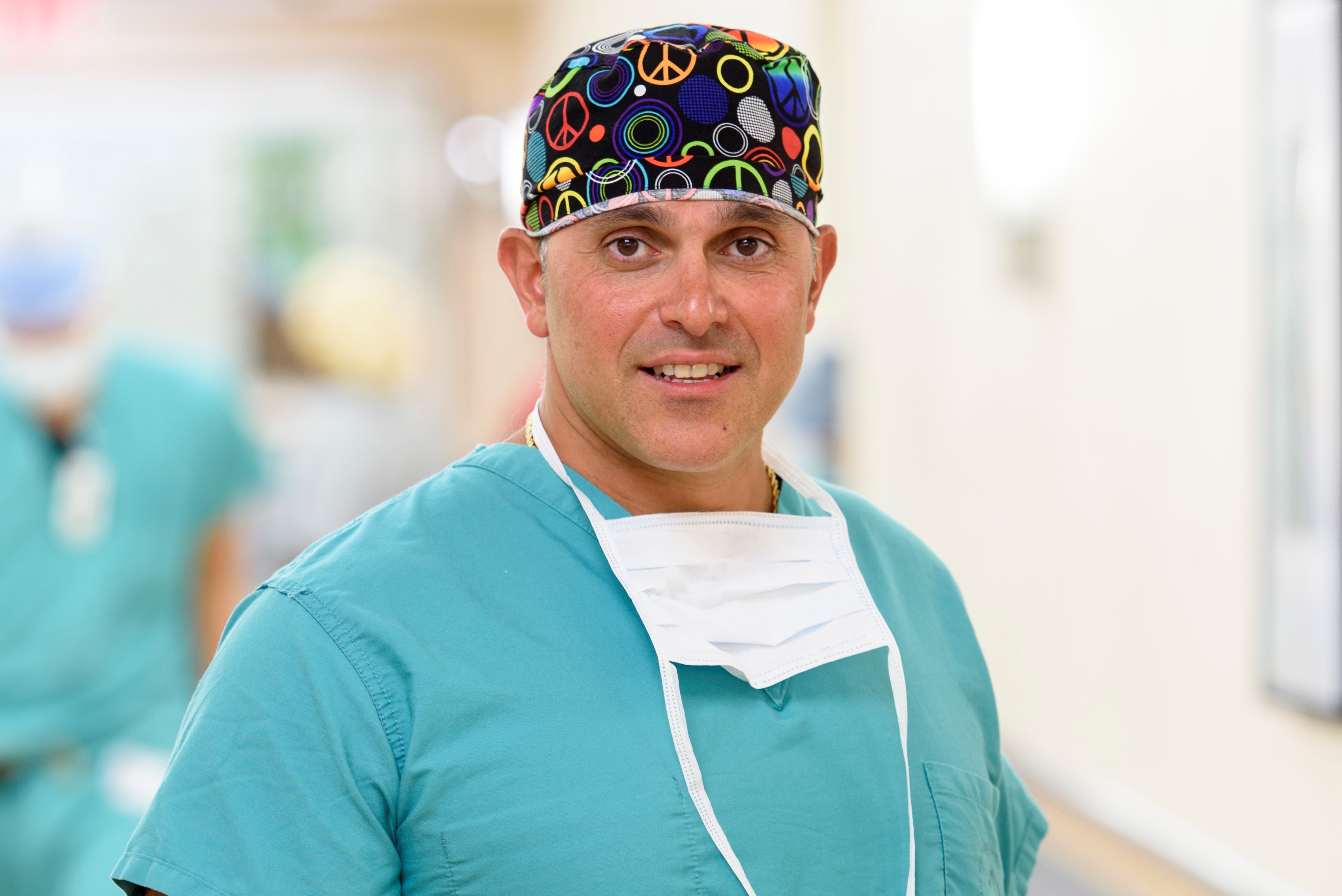
Shannon Quinn learned she had stage 3 rectal cancer just before her 27th birthday. It was the summer of 2020, and she was working as an emergency room technician in Middletown, New York, with a dream of becoming a nurse. Out of the blue, her plans were thrown into turmoil. She had to withdraw from school.
“It was definitely a surprise, and it was very stressful dealing with this along with COVID all around us at the same time,” she says. “I didn’t know what to do.”
Her startling diagnosis highlights a disturbing trend: a persistent rise over the past several years of younger people developing cancer in the colon or rectum. These young patients are suddenly forced to confront not just a gauntlet of treatments — surgery, chemotherapy, and radiation — but also how their side effects could change the trajectory of their lives.
For example, cancer treatments like chemotherapy and radiation can impair fertility. Shannon had not made any decision about having children, but these possible effects were one more thing she had to consider as she weighed her treatment options.
After speaking with local doctors, her gastroenterologist recommended she get a second opinion from Memorial Sloan Kettering Cancer Center (MSK) surgeon Martin Weiser. Shannon met with Dr. Weiser, who described the rectal surgery, and then medical oncologist Zsofia Stadler, who discussed chemotherapy and coordination of her oncological treatment.

“Right away when I met Dr. Stadler, I was like, ‘Yeah, she’s the one,’ ” Shannon recalls. “She was very nice and welcoming.”
Dr. Stadler outlined the treatment plan, which would start with chemotherapy to shrink the tumor so it could be removed by surgery. But after a few months, the chemotherapy wasn’t enough to reduce the tumor and kill cancer cells that had spread to a few lymph nodes. Shannon would also need radiation.
She met with MSK radiation oncologist Carla Hajj. Dr. Hajj explained that the treatment would be effective but that Shannon needed to be aware of a major issue: Radiation to the pelvis can damage tissue in the uterus and make it difficult — if not impossible — to bear children. Shannon faced the prospect of a permanent repercussion from her treatment.
However, there was hope: MSK was offering a revolutionary surgical procedure to preserve fertility. Unlike other methods — such as freezing eggs for use later in a surrogate — this approach could enable Shannon to give birth herself.
Uterine Transposition: A Groundbreaking Procedure
This procedure, called uterine transposition, involves temporarily moving the uterus up to the abdominal wall to avoid damage from radiation to the pelvis. MSK gynecologic surgeon Mario Leitao had learned about the technique from doctors in Brazil, who pioneered the operation in 2018. (Two women who had the procedure from these doctors have since gotten pregnant, and one has given birth.)
Because uterine transposition had never been done in the United States, Dr. Leitao and his colleagues were highly selective about choosing the right patient. “We had already considered a few people before deciding against it, and a few other women declined it when we explained it to them,” he says. “Shannon was young and healthy, did not have any complicating factors, and was the first one who said, ‘Yeah, let’s do it.’ ”
“It was definitely exciting being the first, but also nerve-racking,” Shannon says. “Dr. Leitao said: ‘We can’t know for sure it will work, and if it doesn’t work, you’ll be in menopause at 27,’ ” she recalls. “But he explained that my cancer treatment could also put me in menopause if I didn’t do it. I asked around — my family and the doctors at work. And they said, ‘Why not? Sounds like there’s a good chance it will work.’ I decided to go for it.”
The surgery was part of a highly coordinated treatment plan by MSK specialists. First, Shannon completed her chemotherapy. Then in December 2020, Dr. Leitao along with his partner, gynecologic surgeon Jennifer Mueller, performed the transposition, moving the uterus as well as the ovaries up into the abdomen. The procedure, which took about two and a half hours, was done at the Josie Robertson Surgery Center. Shannon was able to go home the same day.
Soon after, Dr. Hajj administered radiation over five sessions to further shrink the tumor. Because one of the locations where Dr. Hajj practices is at MSK Bergen, in northern New Jersey, Shannon was able to get the treatments much closer to home.
“Moving the ovaries and uterus outside the pelvic radiation field can preserve hormonal and reproductive functions and protect the uterus against fibrosis, with the hopes that the woman can carry a pregnancy to term after treatment is done.” Dr. Hajj says. “This innovative procedure enables radiation to control the cancer while helping young rectal cancer patients — who are living longer after treatment — to preserve quality of life.”
How A Tag Team Performs the Surgery
In May 2021, Shannon was ready for the second operation to remove the tumor. This surgery required exquisite coordination between Drs. Leitao, Mueller, and Weiser in the operating room at the main hospital at MSK. They realized that the uterus would block access to the tumor if it was still attached to the abdominal wall. So Dr. Leitao first had to detach the uterus before Dr. Weiser could then go in and take out the cancer.
“It was quite interesting to work around the uterus that was kind of free-floating but still attached to its blood supply,” Dr. Weiser says. “We had to make sure it didn’t rotate and kink the blood vessels.”
Dr. Weiser removed the tumor and 13 nearby lymph nodes in case the cancer had spread. Then Dr. Leitao repositioned the ovaries and uterus in the pelvis. The entire surgery was minimally invasive using robotic assistance, which required only six small incisions around and below the belly button. Shannon’s recovery was fast. Her only real discomfort was temporary pain in her shoulder as a result of inflating the abdomen during surgery so organs are more visible.
“The nurses were great,” Shannon says. “Whenever I was in pain, they would come talk to me. I had a little panic attack after the second surgery, and they came in and calmed me right down. Everyone there was awesome.”
Nearly a year later, Shannon is cancer-free and still doing well. Her menstruation has resumed, a sign she has retained her fertility. She has resumed nursing school and is thinking of specializing in emergency medicine and possibly becoming a nurse practitioner. She does yoga and enjoys walking her French bulldog named Bleecker.
‘A Huge Step Forward’
Since Shannon’s procedure, Drs. Leitao and Mueller have already done three more uterine transpositions and predict many more patients will be good candidates in the coming years. “We expect to perform this surgery mostly in people with rectal and anal cancers. But in theory, this procedure could be used in anyone who will need to receive radiation in the pelvis for their disease,” Dr. Leitao says.
Many patients will come through MSK’s Center for Young Onset Colorectal and Gastrointestinal Cancer, a clinic dedicated to the needs of people under 50 with these types of malignancies. In addition to fertility support, MSK has many other services that help address the specific concerns of younger adults, including dating and intimacy, sexual health, financial and employment challenges, mental health, and the impact of cancer on the whole family.
“For all of us, the primary goal is curing our patients,” Dr. Stadler says. “But we have to think about the impact our treatments have on the quality of life in young people. I think this is a huge step forward.”







